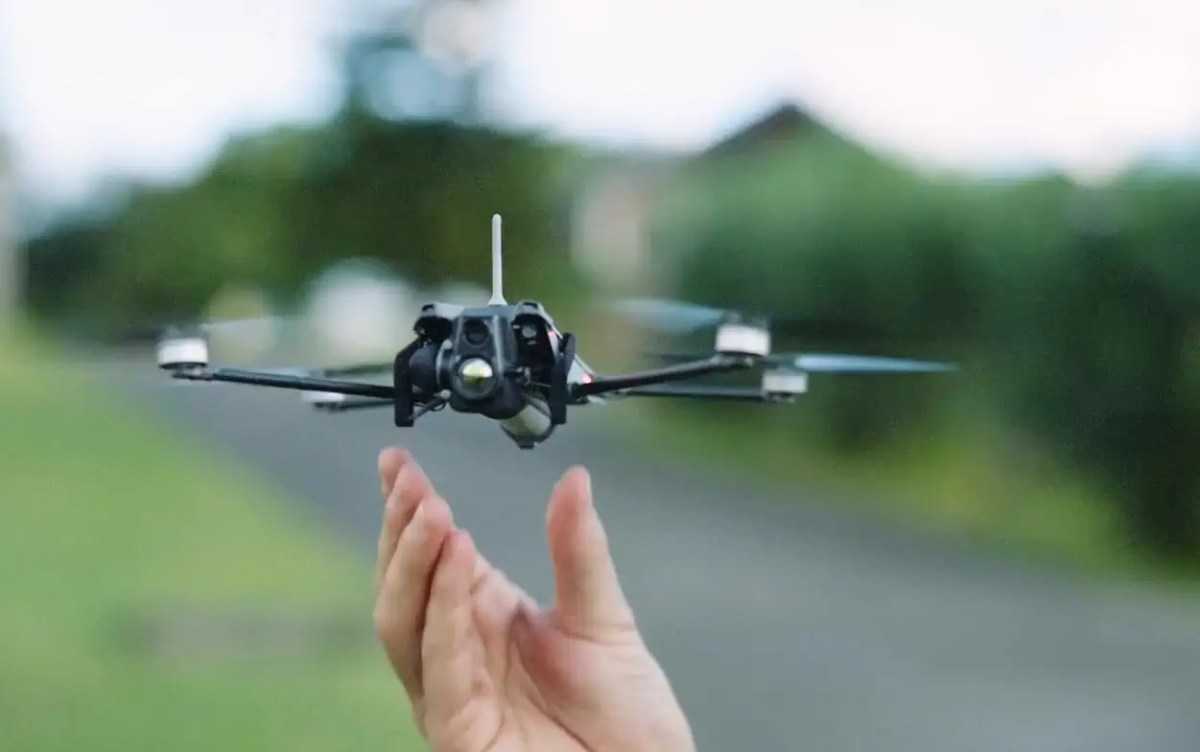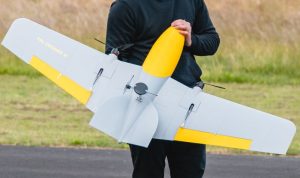Blue UAS Certification for Trace UAV: Meeting the Challenge of Unleashing American Drone Dominance
In the drone world, the term “Blue UAS certification” has been gaining significant attention. This certification represents a new benchmark, especially for drones utilized by the U.S. military and its allies. Recently, Trace UAV, the highly portable nano drone from Vantage Robotics, has secured its spot on the prestigious Blue UAS Cleared List.
But what does this entail? Why is this certification crucial, and how does it contribute to the broader initiative of “American drone dominance”? Let’s explore the realm of Blue UAS, the Trace UAV, and the status of secure, trusted drone technology in 2025.
What is Blue UAS Certification?
The Blue UAS initiative, managed by the U.S. Department of Defense (DoD) and led by the Defense Innovation Unit (DIU), is a comprehensive certification and vetting program. Its main objective is to ensure unmanned aerial systems (UAS) and their components are secure, reliable, and adhere to stringent American defense standards before deployment in military or sensitive government settings.
Key features of Blue UAS certification:
- Full NDAA compliance: Drones must comply with the National Defense Authorization Act (NDAA) requirements, which prohibit the use of key foreign-made components in U.S. defense equipment.
- Cybersecurity and supply chain vetting: Drones and their parts undergo testing to detect and eliminate vulnerabilities, particularly those related to foreign threats.
- Field deployment approval: Blue UAS drones are assessed for their reliability and sturdiness in sensitive and hostile environments.
- Listing on the Blue UAS Cleared List: Securing a spot on this list means the platform is pre-approved for U.S. military and government use without requiring special waivers or exceptions.
Ultimately, if a drone is on the Blue UAS list, the Pentagon deems it safe, secure, and ready for missions.
Trace UAV: An “American Hero” in Nano Drone Form
Vantage Robotics’ Trace UAV, recognized with new Blue UAS status, functions like a “pocket knife” for American troops—compact, versatile, and tactically advantageous.
What distinguishes the Trace UAV?
- Featherweight powerhouse: Weighing only 200 grams, it offers multifaceted capabilities—reconnaissance, surveillance, and real-time intelligence far beyond its small size.
- Impressive endurance: Capable of up to 40 minutes of flight per charge and a 6 km operational range, making it suitable for squad-level missions.
- Stealthy: Its low-noise design is perfect for covert operations.
- Vision2 GCS integration: It integrates seamlessly with Vantage’s secure, ATAK-integrated ground control station, delivering encrypted real-time video streams.
- Top-tier encryption: Incorporates AES-256 encryption, sourcing components only from approved countries, ensuring no backdoors or supply chain risks.
With its Blue UAS certification, the Trace UAV becomes eligible for broader deployment across U.S. military branches and among federal agencies and international allies demanding secure, American-made tactical drones.
Why Blue UAS Certification Matters—Now More Than Ever
Trace’s certification comes at a critical time, coinciding with the U.S. government’s “Unleashing American Drone Dominance” executive order that plans to equip troops with secure, domestically produced drones.
The advantages include:
- Strategic autonomy: By using American-made, vetted platforms like Trace, military and security agencies minimize foreign interference and cyber threat risks.
- Operational agility: Blue UAS drones can be rapidly deployed without lengthy bureaucratic approvals.
- Trusted alliances: Allies seek out systems that have passed the Pentagon’s stringent assessments, especially as global tensions rise.
In a 2025 landscape where drone warfare and surveillance are vital to global security, the “Blue” label means far more than just compliance—it’s a protective measure.
How Blue UAS Certification is Achieved: The Nuts and Bolts
Securing Blue UAS status involves a rigorous multi-phase process:
- Hardware and software review: Every part, circuit, and line of code is thoroughly vetted for supply chain integrity and cybersecurity resilience.
- Operational testing: Drones must prove their capability in challenging and contested environments.
- Encryption and data security assessments: All communications must be securely encrypted and resistant to known intrusion techniques.
- Compliance with NDAA and American Security Drone Act: Adhering to these rules is mandatory for inclusion in federal drone fleets.
Manufacturers like Vantage Robotics collaborate closely with the DIU, undergo repeated evaluations, and adopt transparent supply chains. Achieving the Blue badge requires substantial testing and can span years.
Blue UAS vs. Green UAS: The Certification Landscape
Following 2023, a parallel “Green UAS” pathway emerged for drones that meet high-security standards but are intended for non-DoD, commercial, or civilian government use.
| Blue UAS | Green UAS | |
|---|---|---|
| Target | DoD, military, national security | Civil government, public safety, commercial |
| Compliance | NDAA, highest cybersecurity, U.S.-only supply chain | NDAA, high security with commercial flexibility |
| Remote ID | Not required (DoD-specific) | Required (FAA/civil compliant) |
While Blue UAS reigns superior in compliance, Green UAS fosters a secure, American-made drone ecosystem beyond DoD use.
Real-World Impact: Trace UAV in Action
During a border security operation, a U.S. Customs team requires immediate aerial surveillance over a suspicious convoy. Rather than waiting for air support, they deploy Trace UAVs—stealthy, swift, and streaming encrypted video directly to command. There’s no delay for waivers, nor concerns about foreign hardware leaks, leading to a successful mission that secures critical intelligence.
This exemplifies the Blue UAS advantage—promptness, reliability, and control.
Challenges and Controversies
Why don’t all drones achieve Blue UAS certification? The process is arduous due to:
- Stringent requirements: Even leading U.S. manufacturers find it challenging to source components only from NDAA-approved suppliers.
- Cost: Developing and certifying a “Blue” drone demands considerable investment in research and testing.
- Scope: Some critics argue that current regulations restrict access to certain advanced technologies produced abroad, although the U.S. industry is narrowing this gap quickly.
Despite these hurdles, robust compliance remains essential for military and critical infrastructure applications to prevent sabotage, hacking, or data theft.
The Road Ahead: American Drone Dominance
The Blue UAS program and Trace UAV’s certification pave the way for a new era in drone technology. Supported by recent Pentagon executive orders and funding, American companies like Vantage Robotics are equipped to expand production and foster innovation.
Emerging trends include:
- More “Blue” options: As various companies adapt, the Cleared List will expand, offering users greater choices.
- Component-level certification: Manufacturers can mix-and-match secure, NDAA-compliant parts, accelerating the innovation cycle.
- Stronger export markets: Allies will prefer drones trusted by the U.S. military, boosting American drone exports and fostering partnerships globally.
Expert Tips for Defense and Government Buyers
- Prioritize Blue UAS: For military or essential government drone sourcing, refer to the Blue UAS Cleared List first.
- Partner with certified manufacturers: Companies with Blue UAS certification can offer guidance on compliance and tailored mission solutions.
- Plan for lifecycle costs: While initially higher, investing in certified, secure drones yields benefits in reliability and risk reduction.
Vantage Robotics: People Behind the Machines
Vantage Robotics isn’t merely a technological firm but a team comprising dedicated engineers, veterans, and visionaries. Their journey to Blue UAS certification for Trace involved collaboration with the U.S. Army, extensive field testing, and a commitment to U.S. supply chains.
One team member humorously likened acquiring Blue UAS certification to being knighted by the Pentagon—a challenging but rewarding endeavor.
Final Thoughts
The Blue UAS certification for Trace UAV represents not just a technical achievement but a critical step towards a future where American forces, agencies, and allies deploy the most trusted and secure drones globally. With the DoD and DIU at the forefront and innovators like Vantage Robotics executing plans, the concept of “Unleashing American Drone Dominance” is swiftly transforming from policy to practice.
For defense professionals, policymakers, and drone enthusiasts, keep an eye on this space. The American drone revolution is just taking off, with Blue UAS fueling its ascent.













